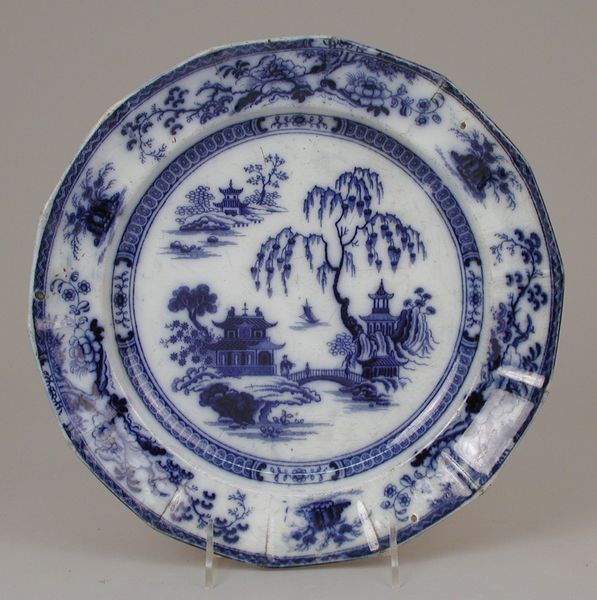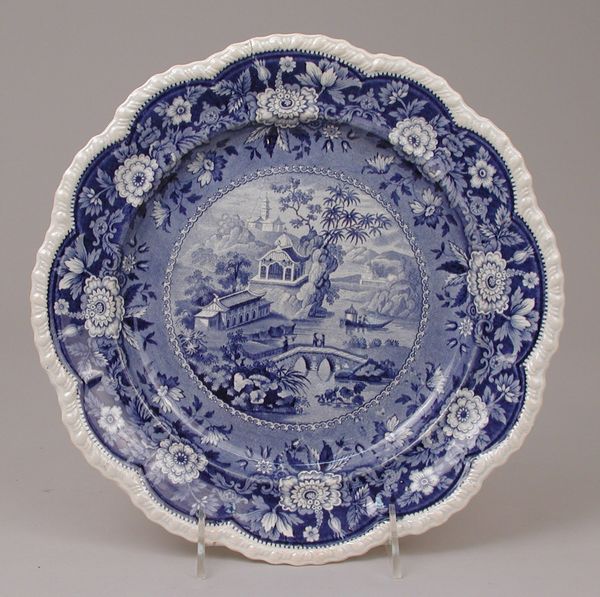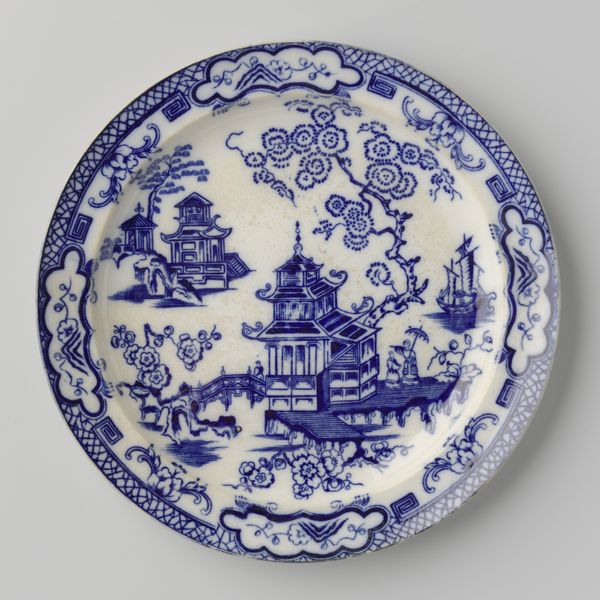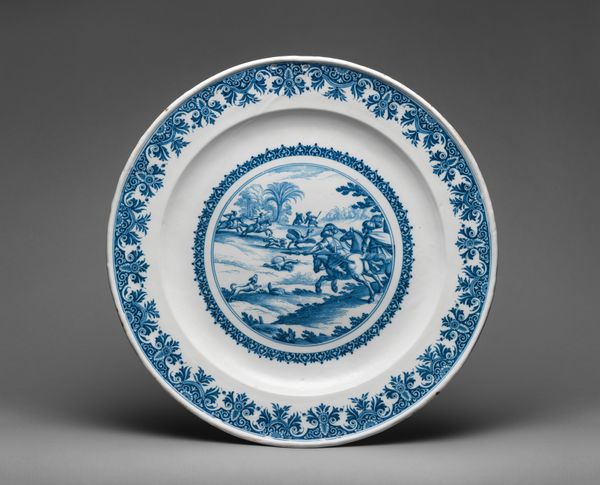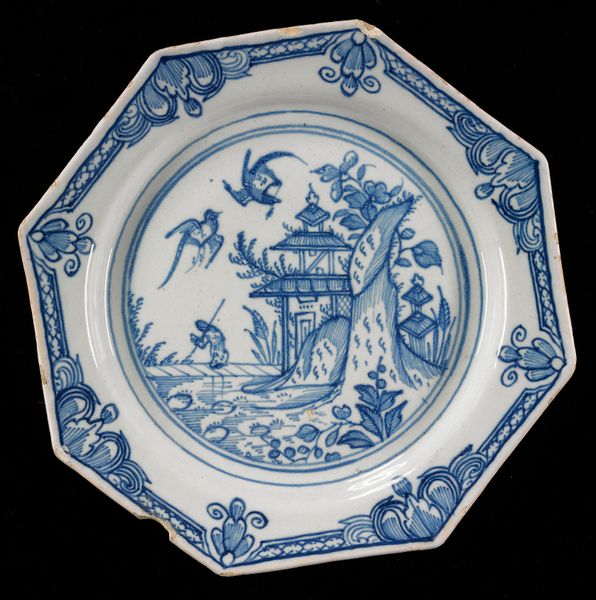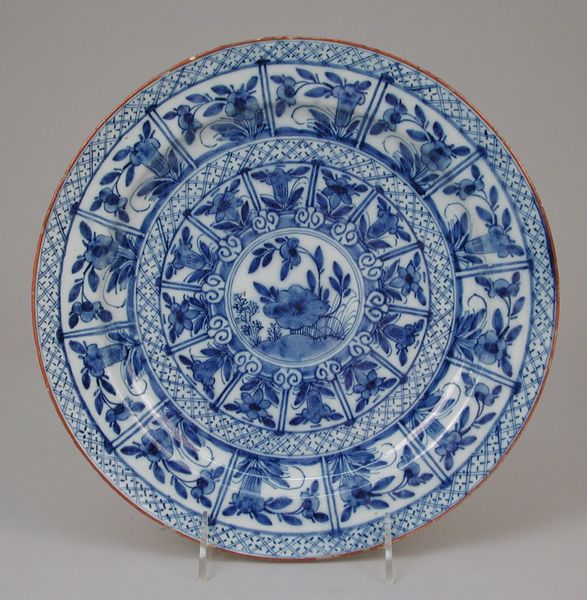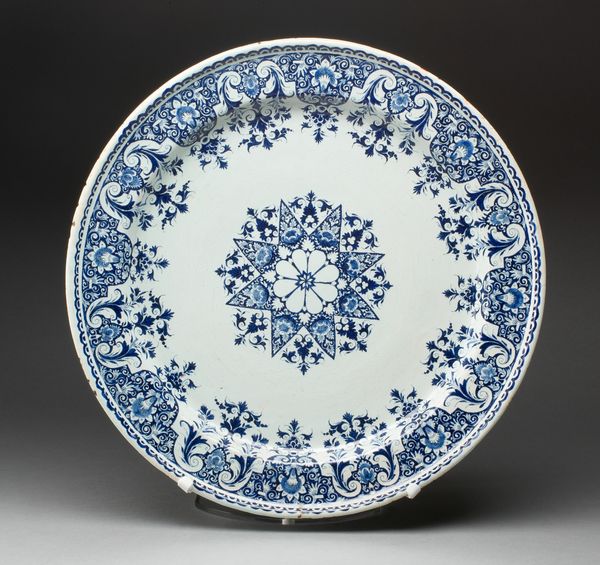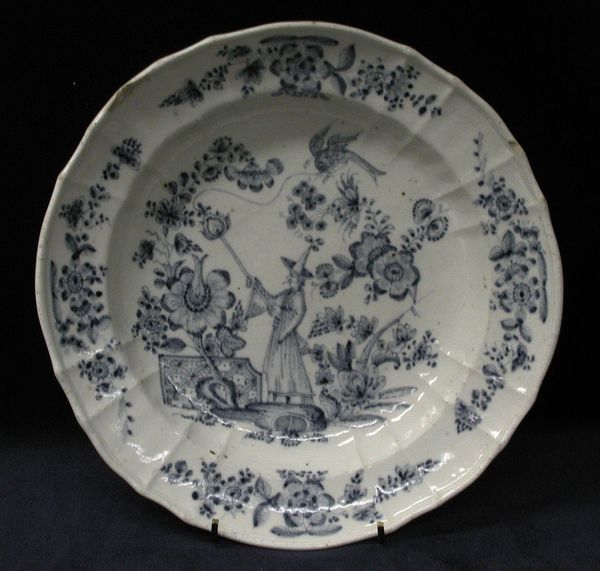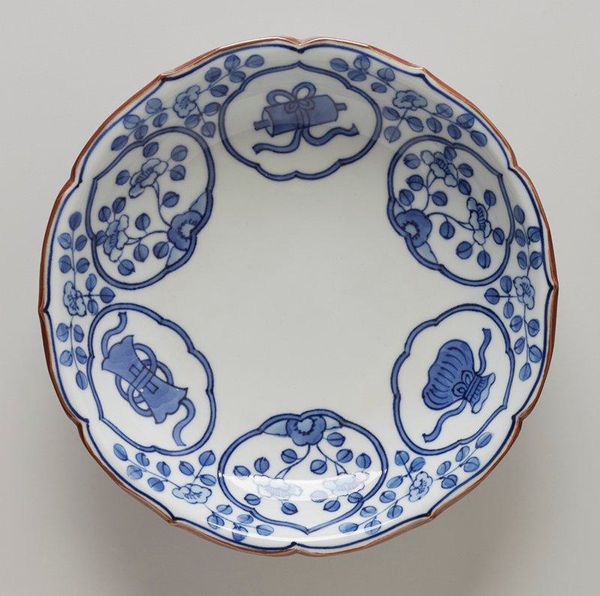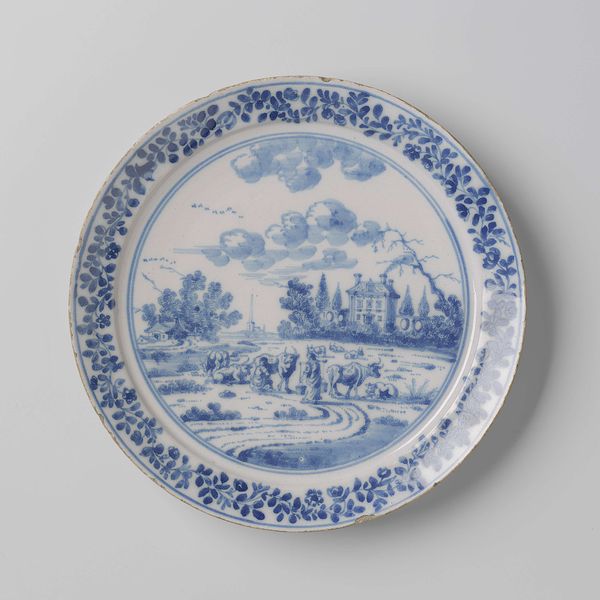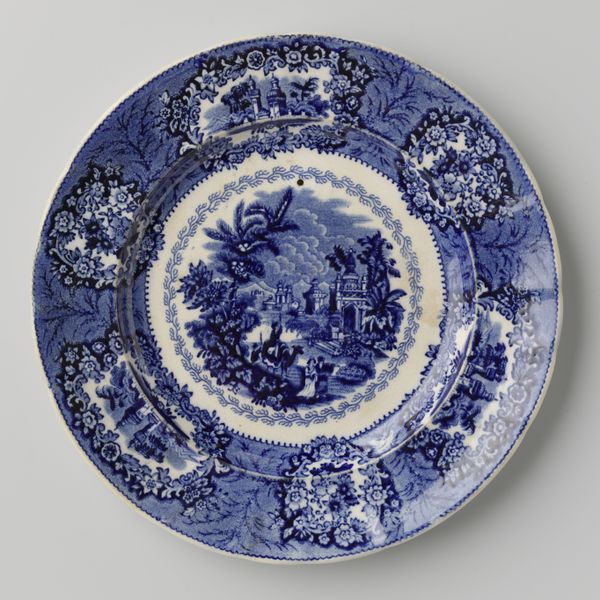
tempera, painting, print, ceramic
#
decorative element
#
tempera
#
painting
# print
#
asian-art
#
landscape
#
ceramic
#
flower
#
ceramic
#
decorative-art
Dimensions: Diameter: 7 1/2 in. (19.1 cm)
Copyright: Public Domain
This plate was made in Longport, likely in the 19th century, by George Phillips. It is earthenware, decorated using transfer printing. The method involved engraving a design on a copper plate, inking it, and then transferring the image to the ceramic surface using tissue paper. The blue color, a popular choice, comes from cobalt oxide in the glaze. Transferware like this was revolutionary because it allowed for intricate, detailed designs to be applied to ceramics quickly and uniformly, which was perfect for mass production. The pattern on this plate imitates Chinese porcelain, feeding into the West's fascination with the exotic East, known as "chinoiserie." Plates like this reveal the complex relationship between industrial production, global trade, and cultural appropriation. It’s a reminder that even everyday objects carry layers of social and economic history within their design and manufacture. So, next time you pick up a piece of ceramic, think about the journey of materials, labor, and ideas that went into its creation.
Comments
No comments
Be the first to comment and join the conversation on the ultimate creative platform.
